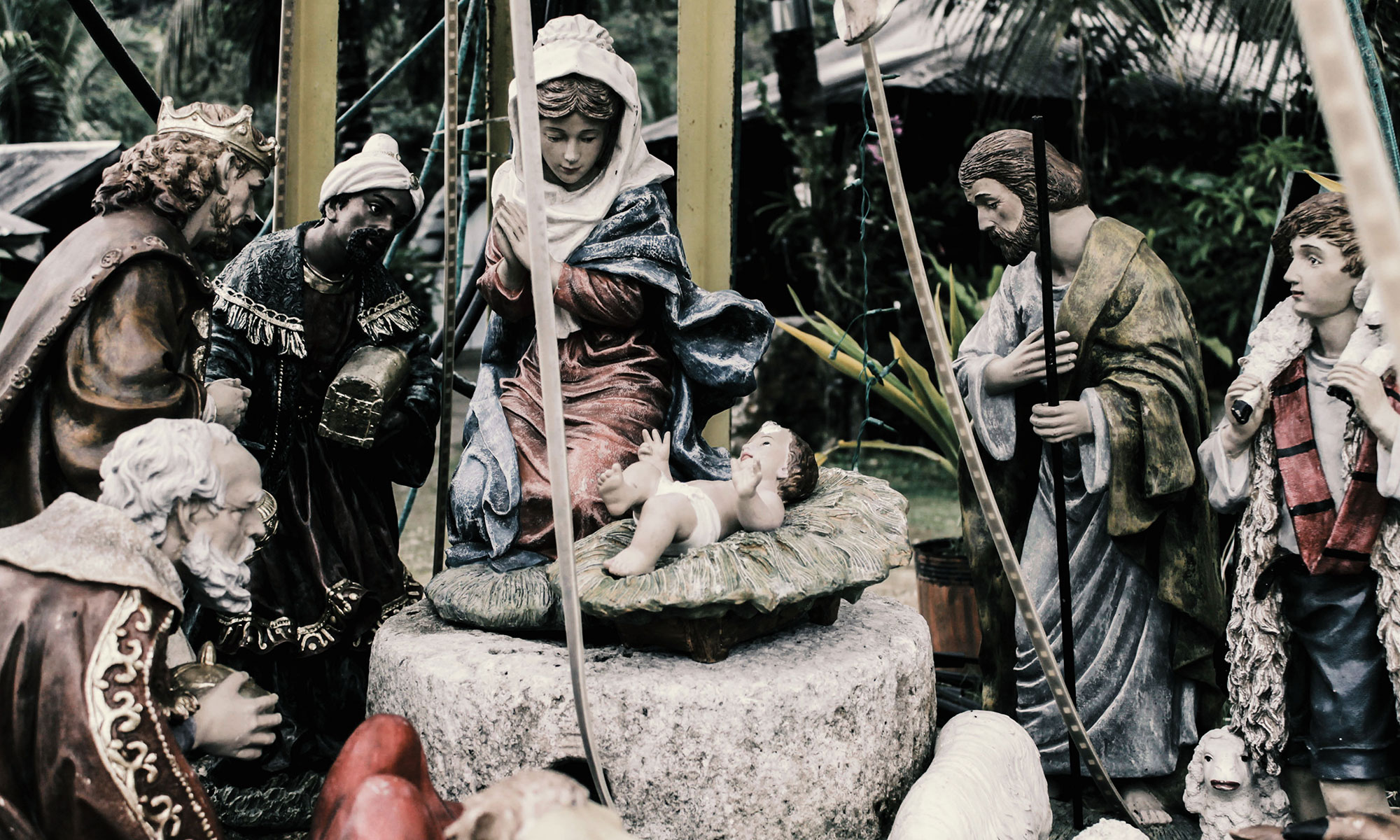“All cultures…have grown out of myths. They are founded on myths. What these myths have given has been inspiration for aspiration.”
— Joseph Campbell, Mythology and the Individual (1997)
From church iconography to Easter baskets, from Yule logs to small indoor crèches and huge outdoor Nativity sets, the backstories behind the outward manifestations of Christian belief, in all their rich variety, remain a source of endless historical interest, and not a little speculation.
Eclectic Christianity
Examples abound. Although Pope Gregory III designated November 1 as “All Saints Day” to honor Catholicism’s holiest men and women, many Christians also celebrate the night before—or All Hallows Eve, better known as Halloween—with customs based on the ancient pagan Celtic festival of Samhain, when people would light bonfires and wear costumes to ward off roaming malevolent spirits.
Likewise, well documented within the catacombs of Rome are images of Christ depicted as Orpheus, a figure from Greek mythology who descended into Hades and returned alive from the underworld—and whose tale is strikingly reminiscent of the Paschal story of Christ’s death and resurrection.
And more than a few features of traditional Christmas celebrations harken back to the Roman feast of Saturnalia, which in the classical period was a time for feasting, goodwill, generosity to the poor, the exchange of gifts, and even the decoration of trees.
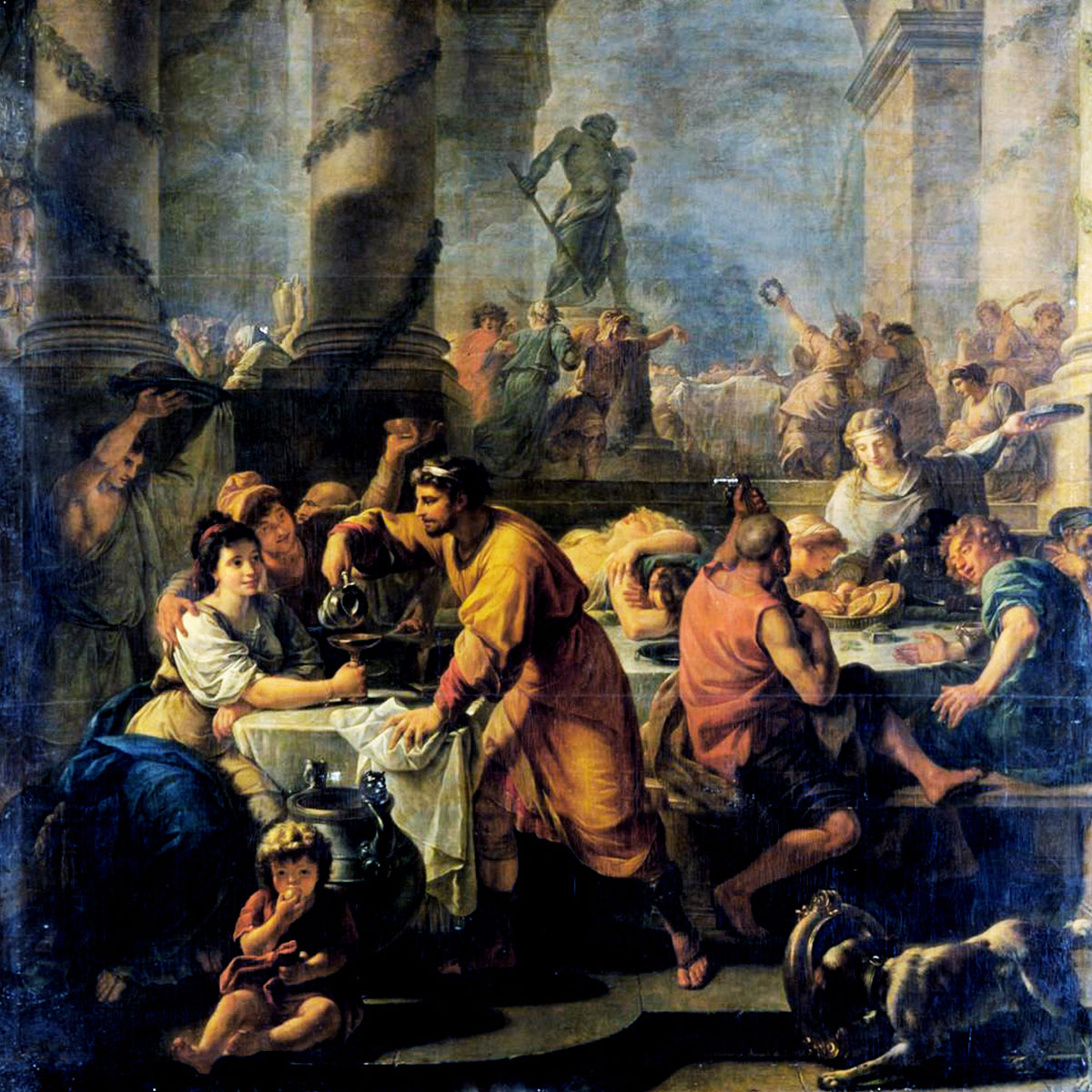
The use of temples, and these dedicated to particular saints, and ornamented on occasions with branches of trees; incense, lamps and candles; votive offerings on recovery from illness; holy water; asylums; holy days and seasons, use of calendars, processions, blessings on the fields, sacerdotal vestments, the tonsure, the ring in marriage, turning to the east, images at a later date, perhaps the ecclesiastical chant, and the Kyrie Eleison, are all of pagan origin, and sanctified by their adoption into the Church.
Thus, one of the more curious (and, some would say, one of the most admirable) aspects of western Christianity is its centuries-old tradition of incorporating non-Christian customs and rituals into its own liturgical conventions. Rather than suppress these customs, Christianity has always tended to absorb them. This was not so much a policy of cultural appropriation as a wholesale integration of such customs in a manner that left the “foreign” elements of worship more or less intact while, at the same time, enriching the existing practices and observances of Christian believers.
This cultural richness can be seen no more clearly than in the way Christmas is celebrated in different ways around the world. In Mexico, celebrants reenact Mary and Joseph’s search for shelter in Bethlehem by going from house to house carrying images of the blessed couple. Filipinos hold a Giant Lantern Festival in the city of San Fernando, while Colombians place elaborate paper lanterns in and around their homes in honor of the Virgin Mary. And in Ukraine, they prepare a “holy supper” that begins as soon as children spot the first star in the evening sky.
But amid all this vast array of holiday customs, one of most popular and universal is the re-creation of the first Christmas with static indoor or outdoor Nativity scenes. And unlike many other traditions that may have arisen out of ancient mythologies and folklore, this one finds a direct source in the plain words of the New Testament.
The Biblical Nativity Scene
Ironically enough, however, the words in this New Testament source are maddeningly sparse. Given its historical import, the actual birth of the Savior is mentioned only twice in the Gospels, and almost in passing, with relatively little in the way of detail:
- Luke 2:6–20: This passage describes shepherds tending their flocks. When an angel appears to them announcing the birth of the Messiah, the shepherds then travel to Bethlehem, where they find Mary and Joseph, newly arrived for the Roman census (and lodging, presumably, in a barn or stable for animals, or more likely the lower level of a peasant home), with the newborn baby Jesus lying in a manger.
- Matthew 2:1–23: In this telling, three “Wise Men” (magi, or astrologers) from the East follow a star to Bethlehem to see the foretold “King of Jews” and to present him with gifts of gold, frankincense, and myrrh. According to the details of Matthew’s recounting, it’s clear that Jesus is no longer a newborn when the Magi arrive to pay their respects, but a one- or two-year-old child.
Neither Gospel so much as hints at a date for the birth of Jesus. Due in part to this paucity of detail, up until the Middle Ages no one made a big deal about celebrating the Nativity. Easter and the Epiphany had a far more prominent place on the liturgical calendar. Christmas does not even appear on the lists of festivals given by the early Christian writers. It was only with the crowning of Charlemagne as emperor of the Holy Roman Empire on Christmas Day in the year 800 a.d. that the feast began to gain some prominence of its own.
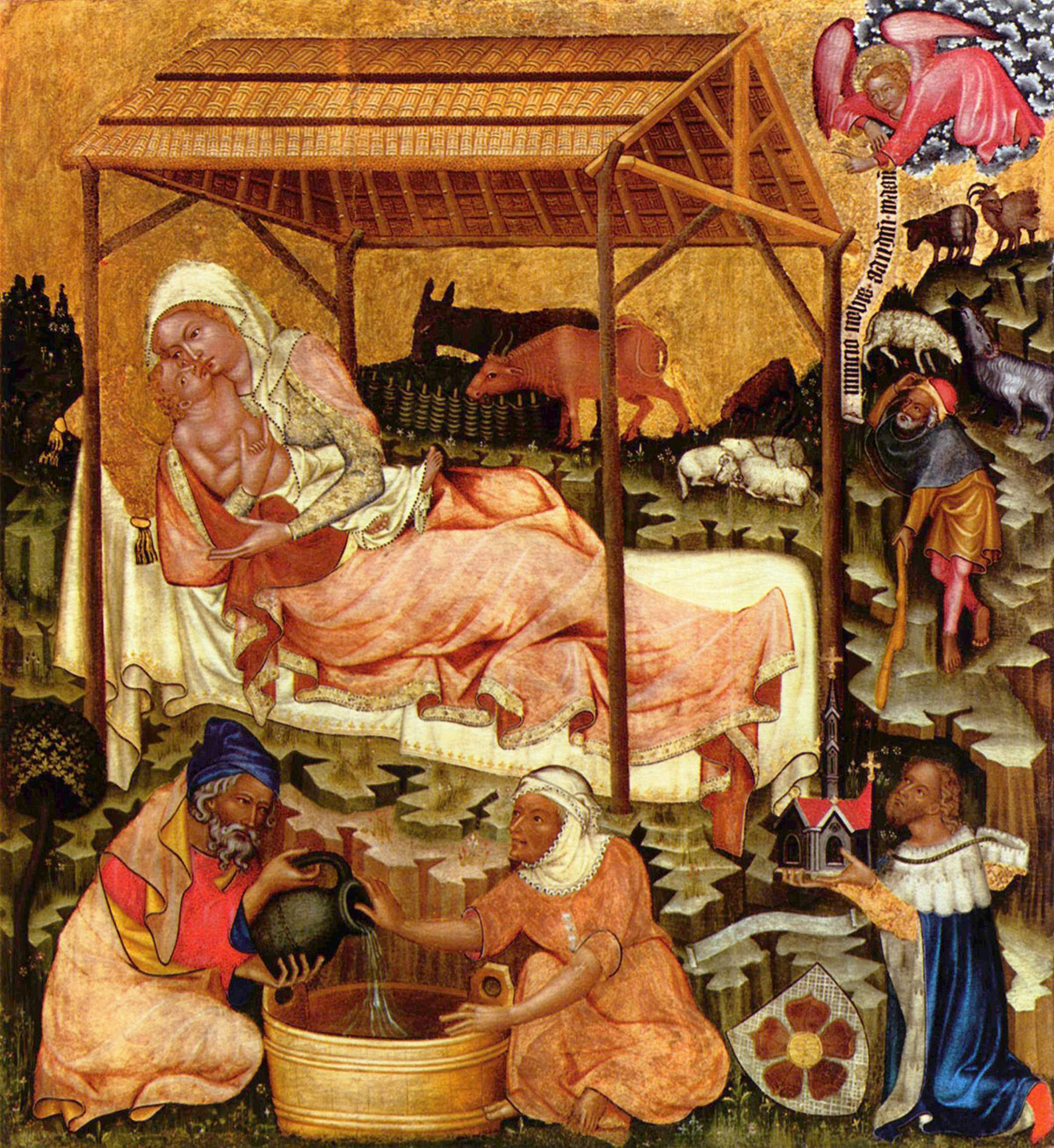
The First Franciscan Nativity
The true origins of what we might recognize as a modern Christmas celebration can be traced back to the year 1223. It was then that St. Francis of Assisi, inspired by a recent trip to the Holy land, staged a celebratory “Nativity Scene” in Greccio, Italy. St. Bonaventure describes it thus in his Life of Saint Francis, Chapter X:
Now three years before his death it befell that he was minded, at the town of Greccio, to celebrate the memory of the Birth of the Child Jesus, with all the added solemnity that he might, for the kindling of devotion. That this might not seem an innovation, he sought and obtained license from the Supreme Pontiff, and then made ready a manger, and bade hay, together with an ox and an ass, be brought unto the spot. The Brethren were called together, the folk assembled, the wood echoed with their voices, and that august night was made radiant and solemn with many bright lights, and with tuneful and sonorous praises. The man of God, filled with tender love, stood before the manger, bathed in tears, and overflowing with joy. Solemn Masses were celebrated over the manger, Francis, the Levite of Christ, chanting the Holy Gospel. Then he preached unto the folk standing round of the Birth of the King in poverty, calling Him, when he wished to name Him, the Child of Bethlehem, by reason of his tender love for Him. A certain knight, valorous and true, Messer John of Greccio, who for the love of Christ had left the secular army, and was bound by closest friendship unto the man of God, declared that he beheld a little Child right fair to see sleeping in that manger, Who seemed to be awakened from sleep when the blessed Father Francis embraced Him in both arms. This vision of the devout knight is rendered worthy of belief, not alone through the holiness of him that beheld it, but is also confirmed by the truth that it set forth, and withal proven by the miracles that followed it. For the example of Francis, if meditated upon by the world, must needs stir up sluggish hearts unto the faith of Christ, and the hay that was kept back from the manger by the folk proved a marvelous remedy for sick beasts, and a prophylactic against divers other plagues, God magnifying by all means His servant, and making manifest by clear and miraculous portents the efficacy of his holy prayers.
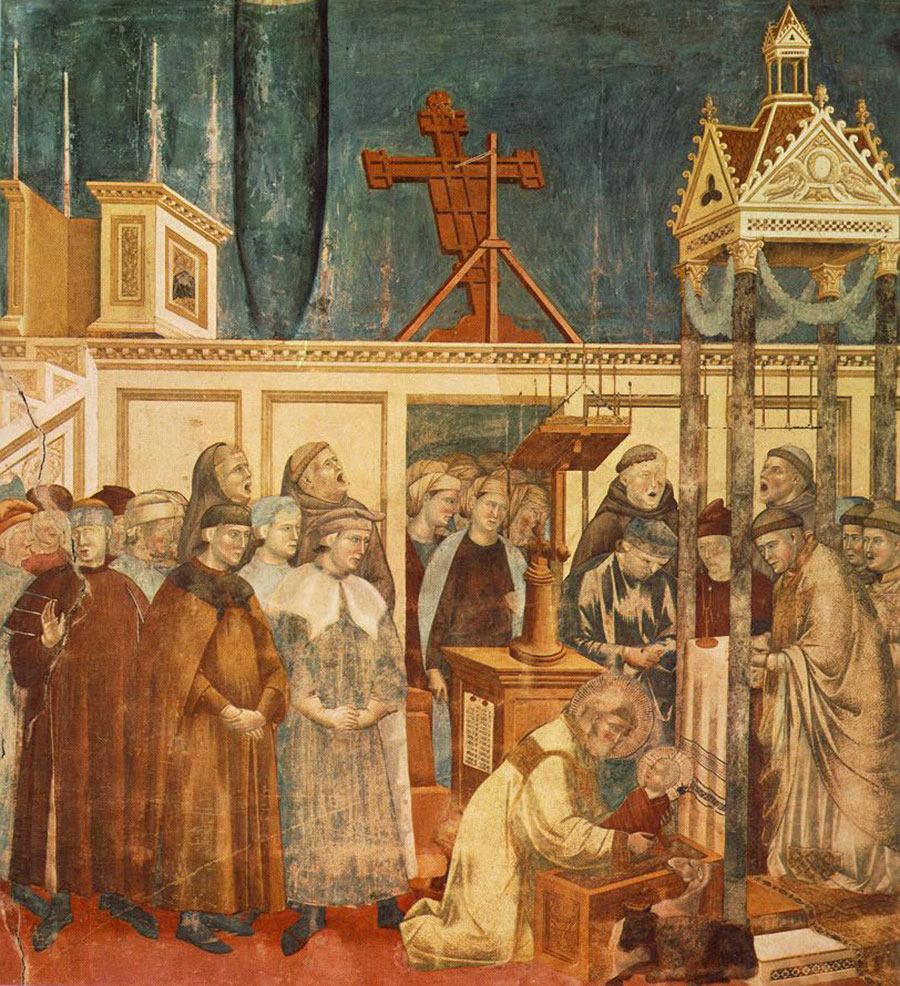
They can be simple or elaborate, small or large. For the sake of comparison, the largest Nativity scene in the world, as noted by the Guinness Book of World Records, is the Tomáš Krýza crèche in the Czech Republic, which covers 200 square feet and features 1,389 figures of humans and animals, many of which are moveable! At the other extreme, a team of scientists from Lithuania has created a minuscule Christmas Nativity scene that is smaller than a human cell!
But for sheer over-the-top extravagance, it’s hard to beat the annual Miracle of Christmas Show in Branson, Missouri:
Modern-day Indoor and Outdoor Nativity Scenes
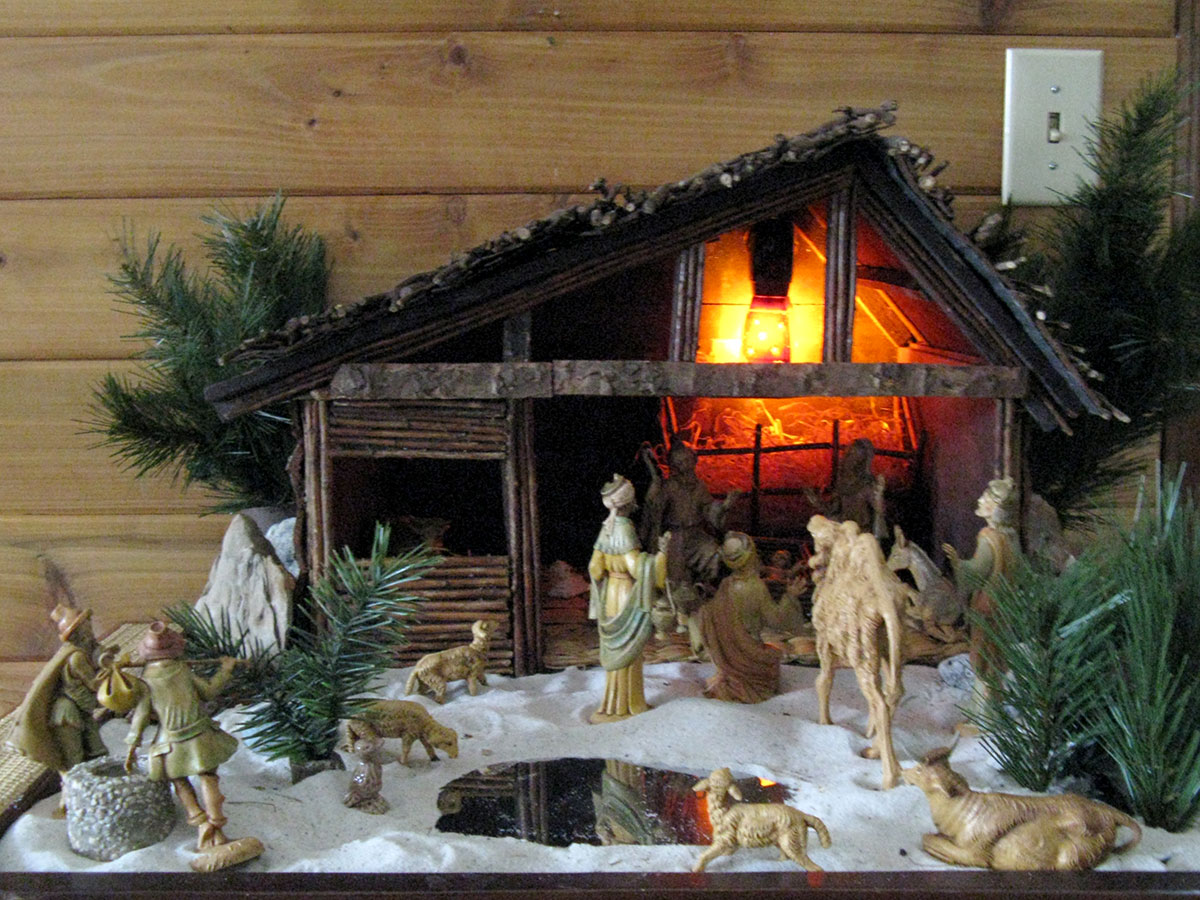
It goes without saying then that, unlike the Nativity described in the Gospels or re-enacted by St. Francis, many of today’s Nativity scenes leave very little to the imagination.
For example, we do not actually know the names of the shepherds, nor even how many of them heeded the angel’s announcement. Likewise, the New Testament never mentions the names of the three Magi. (However, according to extra-Biblical sources and church tradition, their names were Balthasar, a king of Arabia; Melchior, a king of Persia; and Gaspar, a king of India). And for certain, the shepherds and Magi would not have arrived at exactly the same time to worship the newborn Messiah and offer Him gifts. Nevertheless, in popular tradition the two narratives occur within the same time frame. For that reason, many indoor and outdoor Nativity scenes today include both shepherds and the Magi together.
Similarly, the New Testament narratives do not mention a single specific animal in the vicinity. So if any animals were present at the birth of Jesus, there is no way of knowing which species exactly. However, one can assume that the shepherds would have brought along some of their sheep; and the Magi would arguably have arrived by camel, which was a common mode of travel and transport at the time. (We can be fairly certain that no pigs would have been present, as they were considered unclean beasts in ancient Judea.) The other kinds of animals commonly kept by the farmers of Bethlehem would have included oxen, donkeys, goats, and perhaps chickens or other domesticated fowl. Dogs and cats also would not have been out of place. In the Roman period during which the Nativity occurred—and given the geography—it is not completely implausible that there might even have been an elephant in attendance!
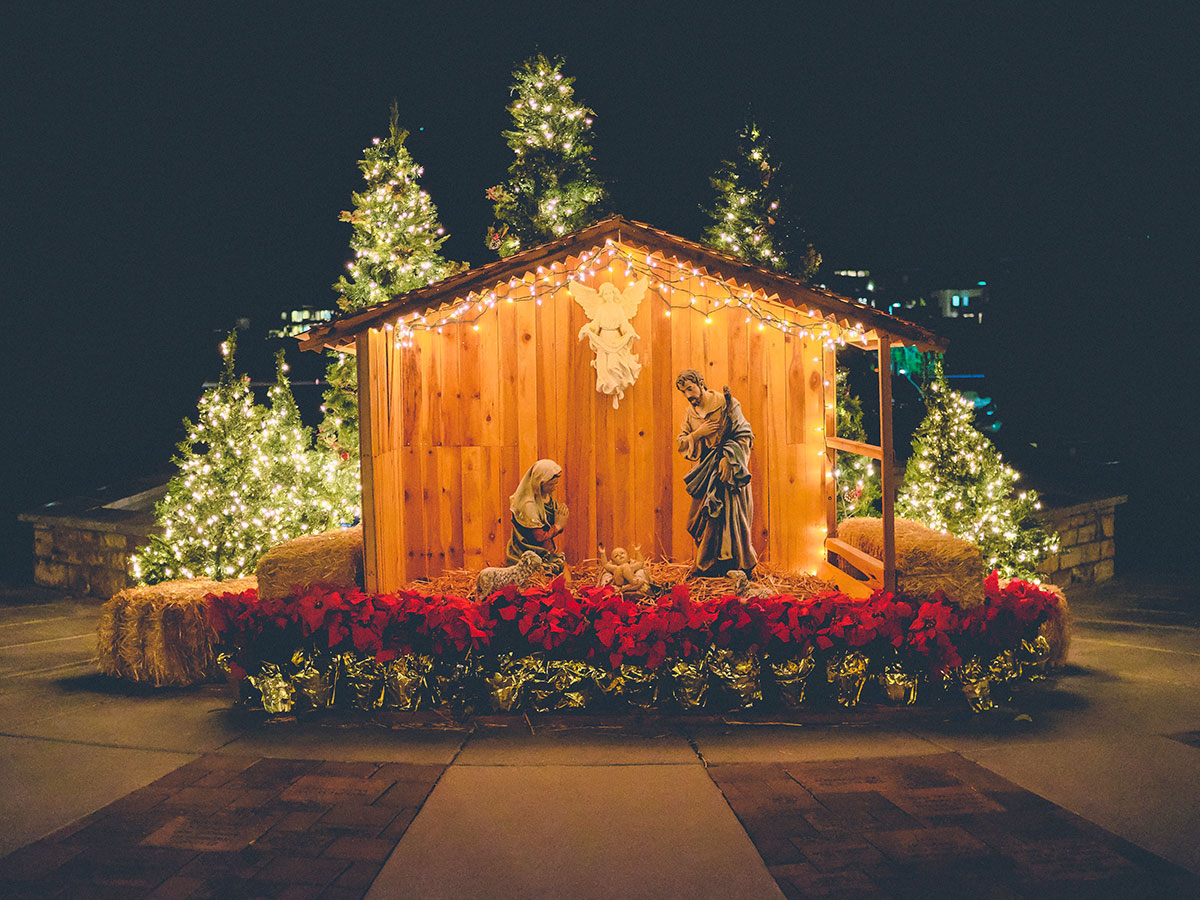
Therefore, based solely on the New Testament narratives, a strictly “historical” setup would look rather deserted indeed! Besides Mary, Joseph, and the baby Jesus lying in a manger, a truly authentic Nativity scene might include several shepherds, possibly some sheep, surely a donkey and/or ox (or two), and an angel flying overhead. But authenticity isn’t exactly the point. In fact, in all likelihood the Holy Family did not shelter in a barn or stable at all, but in the lower level of a first-century Middle Eastern rural relative’s home.
Nowadays, however, centuries of linguistic obfuscation, historical speculation, popular tradition, and artistic license have made it perfectly acceptable to set up a Nativity scene that adheres instead to individual imagination and belief rather than Biblical accuracy. For that reason, it is very common for celebrants to populate the scene with multiple angels, a congregation of shepherds, and of course the three Wise Men. The cast of characters in these dioramas may even be expanded to include an entire village of curious Bethlehemites! As for the non-human figurines, throughout the Christian world, paintings and other artistic renderings of the Nativity have included not just the barnyard beasts native to Roman-era Judea but also animals found only in the artist’s native country and completely alien to the Bethlehem of Jesus’ time. For example, some African artists have included giraffes and lions in their Nativity scenes.
So it really is about one’s faith and personal aesthetics. Therefore, when deciding how to create your indoor or outdoor Nativity set, feel free to populate it with as few or many figurines as will feel right to you!



